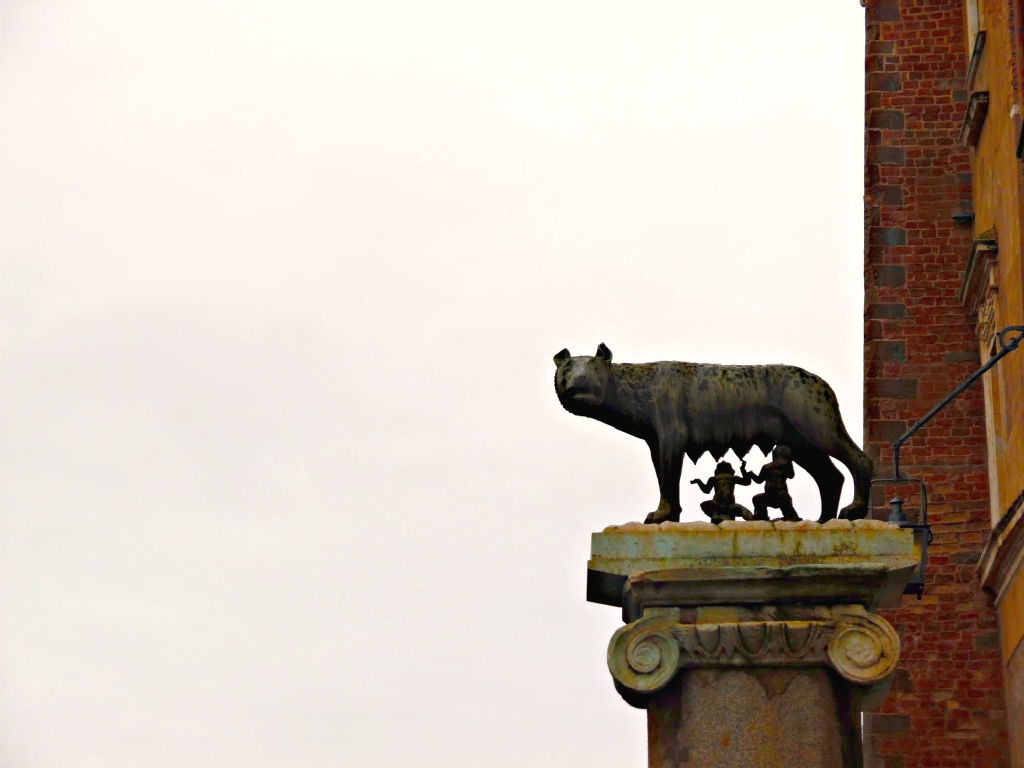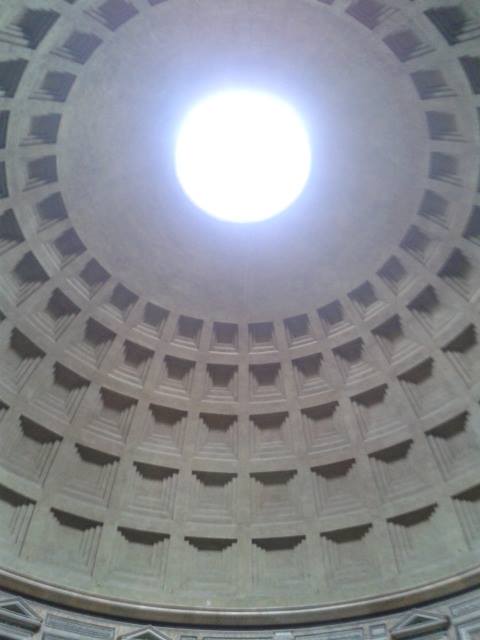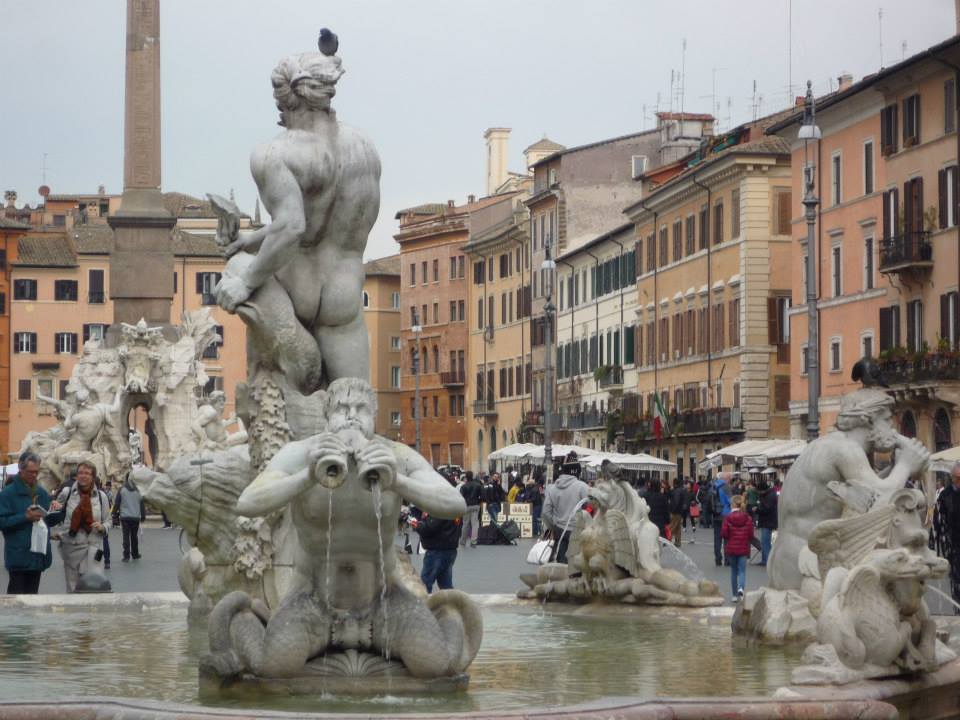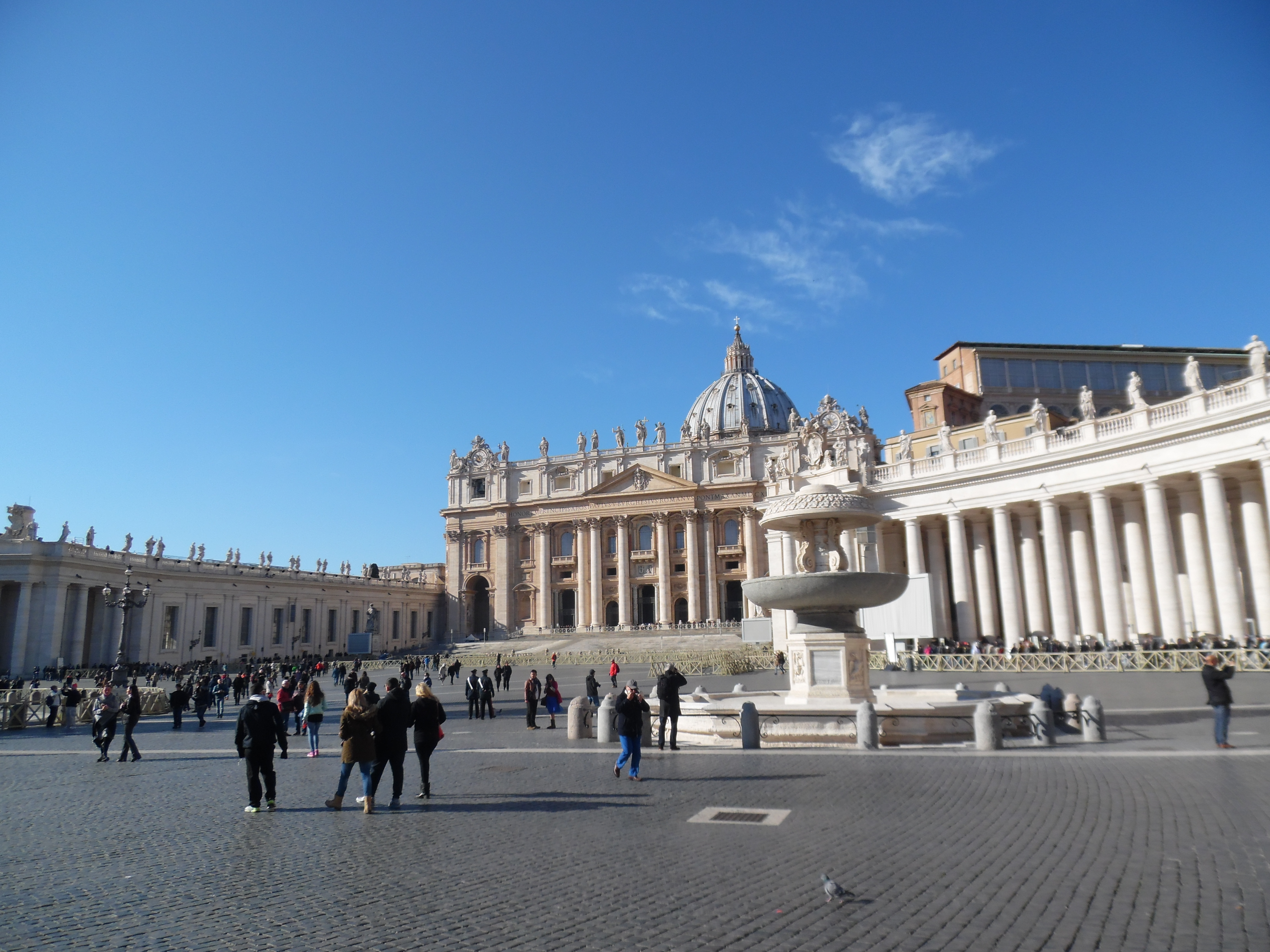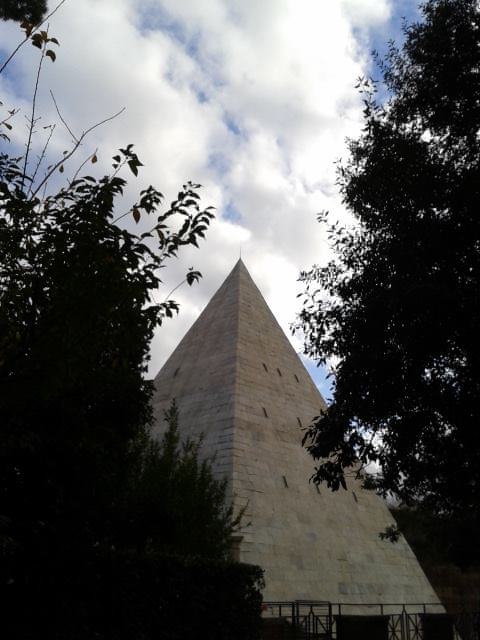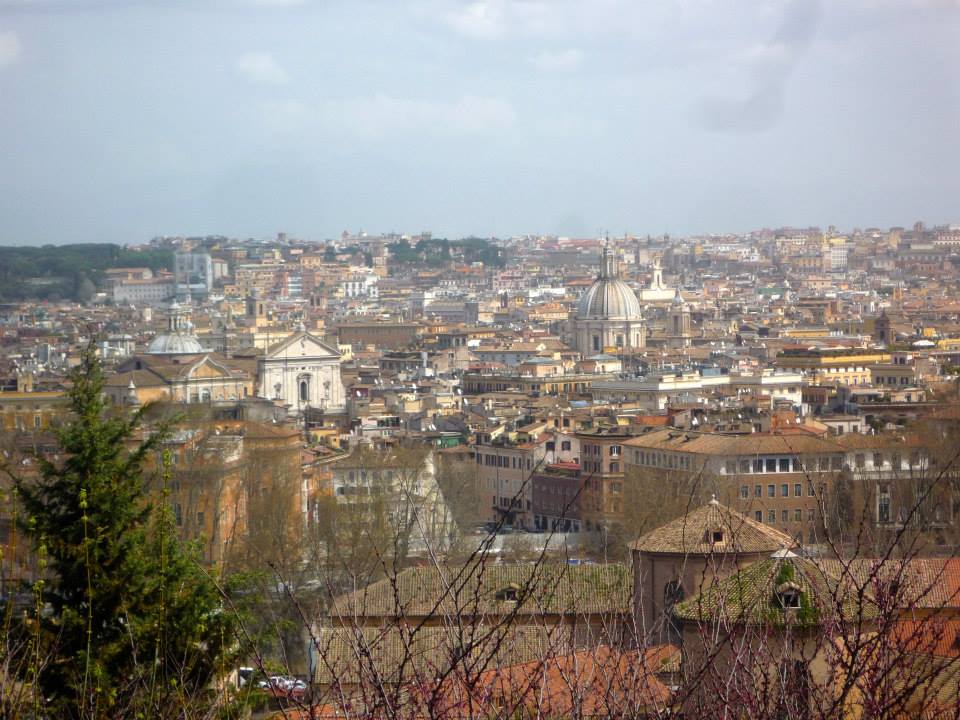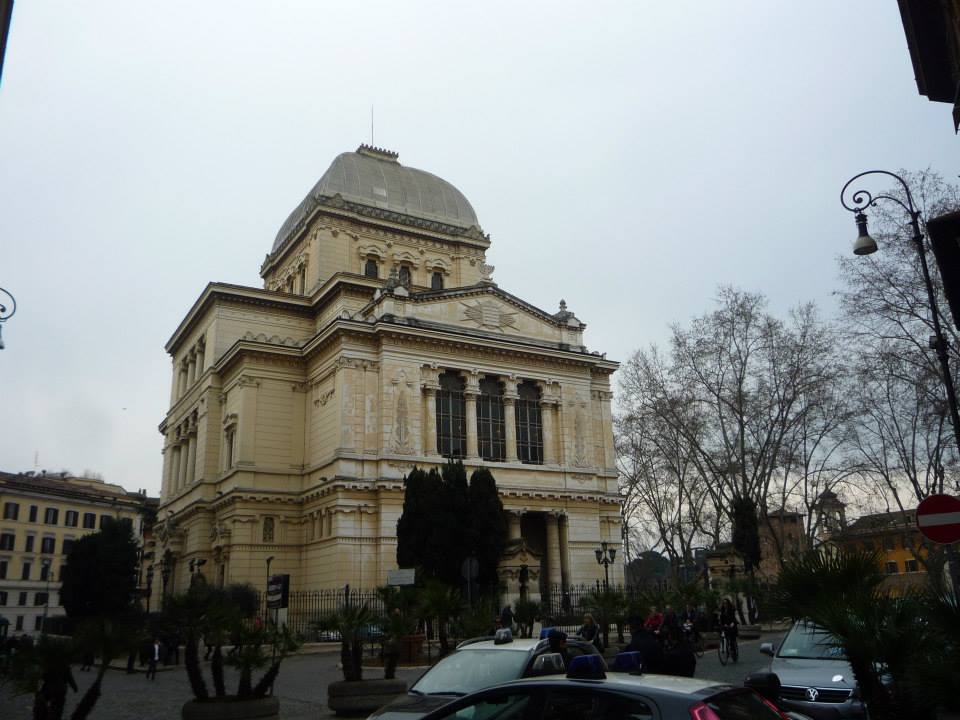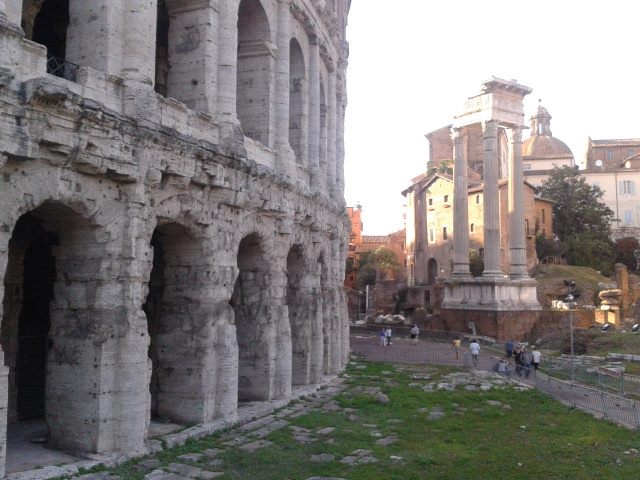Module Outline
Please note that this is an illustrative outline and there may be some changes to the syllabus and core texts.
Week 1: Induction week, no lecture
Section 1: Medieval and Renaissance Rome
DOWNLOAD SYLLABUS INCLUDING COMPULSORY READING MATERIAL HERE
(NOTE: READING MATERIAL WILL BE PROVIDED BY TUTOR)
Week 2: Rome: Saint or Whore?
This session explores the double image of Rome, which develops after the rise of Christianity. It draws on the ancient personification of the Goddess Rome and the mostly negative portrayal of Rome in the Bible. Rome is seen as a corrupt, pagan city, the place where the first Christians were persecuted. As such it is often portrayed as a ‘prostitute’, and compared with Babylon, the city of all vices. But Rome is also celebrated as the ‘new Jerusalem’, the cradle of Christianity, the privileged seat of the Church and of Imperial Power.
Week 3: Celebrating Rome
The session concerns Francesco Petrarca, the so-called 'first humanist’, who writes about his nostalgic walk in Rome among the ancients ruins; he also played an important role in supporting the political reform of Cola di Rienzo, who hoped (in vain) to restore Rome's ancient greatness.
Week 4: Preserving Rome
This session examines how Renaissance people envisaged their relation towards the ancient ruins of Rome, which were crumbling apart or being reused to build other monuments. In On the Inconstancy of Fortune (1448), Poggio Bracciolini mourns the ancient splendor of Rome and its present state of decay, which he sees as evidence of the cruelty of Fate. In a letter to Pope Leo X, written around 1519 by the artist Raphael and the humanist Castiglione, one can see the emergence of an 'scientific' interest in ancient monuments and the first attempts to preserve the symbols of Antiquity.
Week 5: Destroying Rome
This session focuses on the reactions to the Sack of Rome (1527), when Rome was brutally pillaged and destroyed by the armies of Charles V, a traumatic episode that triggered historians and poets to reflect on Rome’s glorious past and mourn its present state of destruction. During those years Rome ceased to be seen as the 'caput mundi' (centre of world). The session will also cover the image of Rome in Protestantism, where the representation of Rome as a prostitute is used again to represent the corruption of the Papal Court and justify the call for a Reformed Church.
Week 6: Reading week, no lecture
Week 7: Reinventing Rome
The session examines what happened when people discovered by chance lost masterpieces from Antiquity or sought to emulate existing architectural wonders. The discovery of the famous statue of the prophet Laocoon being eaten alive by two snakes triggered a competition between prominent Renaissance artists, who sought to reconstruct its missing parts. The fascination for the ancient Pantheon in turn led many artists to imitate and parody its cupola in the Baroque churches of Rome.
Section 2: Roman Decadence, Risorgimento and Modernity
By combining urban studies, literature, music, and the visual arts, these sessions will cover the changes undergone by the cityscape of Rome from the Papacy of Julius II (who patrons and gathers in Rome such artists as Michelangelo, Raphael, and Bramante) through the baroque city of Bernini, Borromini, and Caravaggio, the eighteenth and the nineteenth century, until the Capture of Rome of 1871 and its establishment as the capital of the newly unified Italian state. The first two sessions will cover specific and symbolic venues of Rome – such as Piazza del Popolo, the Elephant and Obelisk in Piazza della Minerva, the Jewish ghetto, and Piazza San Pietro – which will help delineate a cultural topography of the city. The final session will include passages from Gabriele D’Annunzio’s poems, his novel Il Piacere, and Matilde Serao’s La conquista di Roma, with the aim of showing the way post-Unification Italian culture negotiates the city’s heritage with the needs of cultural modernization.
Week 8: Papal Rome and the Baroque
Week 9: Rome and the Risorgimento
Week 10: Roma Umbertina
Section 3: Fascist Rome
The two sessions will look at the way in which Rome was transformed by Fascism into a backdrop for national and later imperial propaganda. The lectures will examine transformations affecting the urban landscape (from the creation of the Fori Imperiali route to the building of EUR and the Foro Italico). They will look at how architecture and urban landscape were used to reinforce Fascist rhetoric and, later on, to inscribe the history of the Italian colonial enterprise onto the face of the Italian capital. Consideration will also be given to recent re-readings of those processes in both film and literature.
Week 11: Rome in fascist propaganda; fascist transformations of the urban landscape
Week 12: The colonial enterprise. Re-readings of Italian colonialism in recent film and literature.
Section 4: Post-war reconstruction, Neorealism, and the Economic Boom
This section discusses the significance of Rome in film and literature in the decades following World War II. It examines how the urban landscape of Rome is used to embody various meanings in post-war film and literature, functioning as a symbol of hope and rebirth following the trauma of World War II and as a site for social critique. The lectures will focus on the cultural movement of neorealism through an analysis of two neorealist films and extracts from works by authors such as Alberto Moravia, Carlo Levi, Ennio Flaiano and Pier Paolo Pasolini. Students will then move on to examine social and cultural change during Italy’s economic boom through Fellini’s depiction of Rome as city of hedonism and celebrity in La dolce vita.
Week 13 Neorealist Rome – Vittorio De Sica, Ladri di biciclette (1948)
Week 14 Neorealist Rome – Luchino Visconti, Bellissima (1951)
Week 15 Literary Rome
Week 16: Reading week
Week 17: Rome and Italy’s economic boom. Ennio Flaiano & Federico Fellini, La dolce vita (1960)
Section 5: Contemporary Roman Identities
This section attempts to challenge dominant ideas of Rome and Italian identities by examining a diversity of figures that emerge in the modern cultural environment of Rome. These seminars will examine the ways in which migrant and transnational subjects in twenty-first century Rome engage with the myth of the city. Located in the historical heart of Rome and arguably its first genuinely multicultural community in modern times, Lakhous's novel explores the ways in which cultural stereotypes about Roman-ness and foreign-ness inform interpersonal interactions within a defined community, exposing the prejudices which operate at intra-national as well as transnational levels. Students will develop an understanding of issues related to migration, citizenship, and cultural identity in the contemporary urban space of Rome, and an informed insight into the ways in which migration literature in Italian responds to and extends the Italian national literary canon.
Week 18: Queering Rome. Ferzan Ozpetek, Le fate Ignoranti (2001)
Week 19: Transnational Rome, Amara Lakhous, Scontro di civiltà per un ascensore a Piazza Vittorio (2006)
Week 20: Transnational Rome, L’orchestra di Piazza Vittorio
Term 3: Student poster presentation session (approx. 3 hours) and individual tutorials for essay planning.
